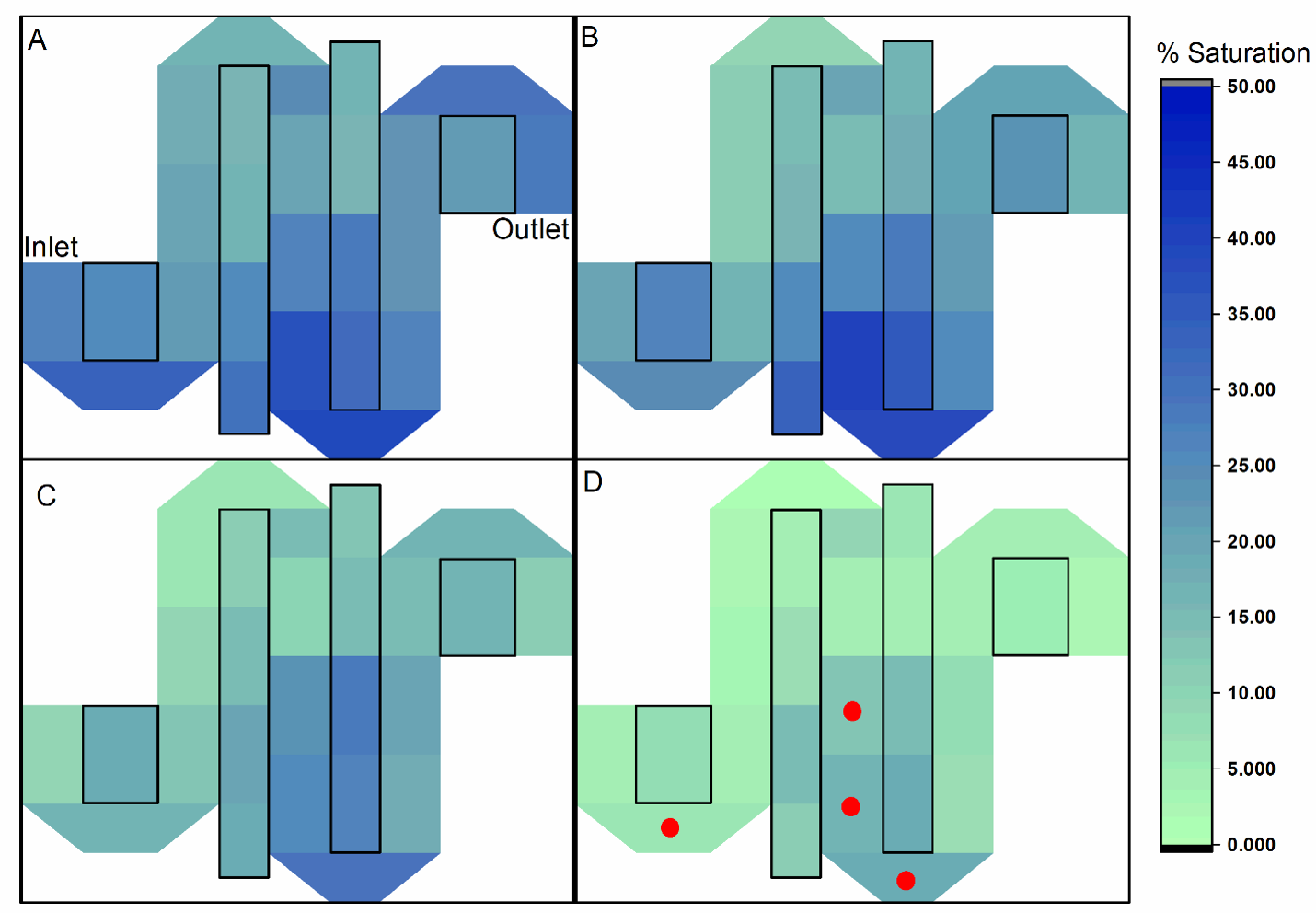Fuel Cell Lab
Our Work: PEM fuel cell water management is a key component of high performance operation. These projects relate to transport phenomena within the cell.
Click one of the topics here to see the lab and highlights of recent work:
Synchrotron X-Ray Radiography
An issue with studying water management in fuel cells is that the fuel cell is not transparent, so it is difficult to image the water during operation. One solution is to use Synchrotron X-Ray radiography. In collaboration with the Canadian Light Source (CLS) at the University of Sasakatchewan, our team has begun to study studies water in the flow channels and in the porous gas diffusion layer (GDL). An example of our work with GDLs is shown below. This work was initially funded via NSF Award #1444198 in collaboration with Dr. Lifeng Zhang and Dr. Raymond Spiteri.

The results can further be segmented to see how saturation varies with space and time. The experimental results indicate strong in the drying profile of a gas diffusion layer.

Spatial saturation plots showing the segmented saturation profiles after A) 1 min of dry air flow, B) 10 min of dry airflow, C) 20 min of dry airflow, and D) 30 min of dry airflow. From: Battrell, L., Patel, V., Zhu, N., Zhang, L., & Anderson, R. (2019). Imaging of thedesaturation of gas diffusion layers by synchrotron computed tomography. Journal of Power Sources, 416, 155-162. With permission from Elsevier.
Gas Diffusion Layer Saturation
The porous gas diffusion layers play many roles: passage for reactant gases to the catalyst layers, removal of product water, transport of electrons and heat from the reaction, and mechanical stability. When too much water remains in the cell, 'flooding' occurs. Our work focuses on water saturation on the cathode where water is produced. By using a dry hydrogen stream at the anode, water from the cathode can be driven to the anode.

As the water saturation decreases, the voltage (i.e. performance) goes up. Our group is using this technique now to quantitatively determine the saturation lever in the cell. This aids in understanding the transport phenomena in the porous layer, which can lead to better engineered designs.

The normalized voltage here is the voltage gained throughout the process. High voltage gains evidence high initial saturation conditions. The total water removed is the amount of water vapor estimated to move from the cathode to the anode. The estimate is done with a detailed analysis of the pressure drop of the cathode and anode gas streams.
These efforts are complemented by Computational Fluid Dynamics studies. By varying the diffusivity of the porous layers and membranes, we can see the local water vapor flux numerically.

In this example, the cathode air inlet is fully humidified (100% RH) and the anode hydrogen inlet is dry (0% RH). Two gas diffusion layers, two catalysts layers, and a membrane are placed between the flow channels. Gases flow left to right. Down the length of the channel, the concentration gradient drives vapor flux from the air side to the hydrogen side. These results add further quantitative insight into the saturation process and transport phenomena within the cell.
Flow Regime Mapping
The gas delivery channels in the PEM fuel cell experience two-phase flow when product water enters the channel. Flow regime maps like this one predict which two-phase flow pattern will emerge in the channels. In the active PEM fuel cell, these regimes are likely to be slug, film/droplet, pseudo-single phase, and accumulating. With this information, the two-phase pressure drop can be quickly estimated via the Lockhart-Martinelli approach. The flow regime is also related to performance and voltage stability.

[Image posted with permission from Elsevier]
Anderson, R., Eggleton, E., & Zhang, L. (2015). Development of two-phase flow regime specific pressure drop models for proton exchange membrane fuel cells. International Journal of Hydrogen Energy, 40(2), 1173-1185.
Droplet Dynamics
Liquid water that moves through the gas diffusion layer enters the gas flow channel as a small droplet. In order to be removed from the system, it is necessary to know the critical diameter at which the droplet will detach.

In the 'Stable' region, the droplet remains adhered to the gas diffusion layer surface. In the 'Unstable' region, the droplet will be sheared off of the surface. The force balance analysis here is based on the gas flow rates, channel dimensions, wetting properties of the materials, and properties of the water at the operating temperatures.
Current work is using these droplet diameters and additional force analysis to predict which flow regime will occur. Those results will be further compared to CFD VOF studies.
